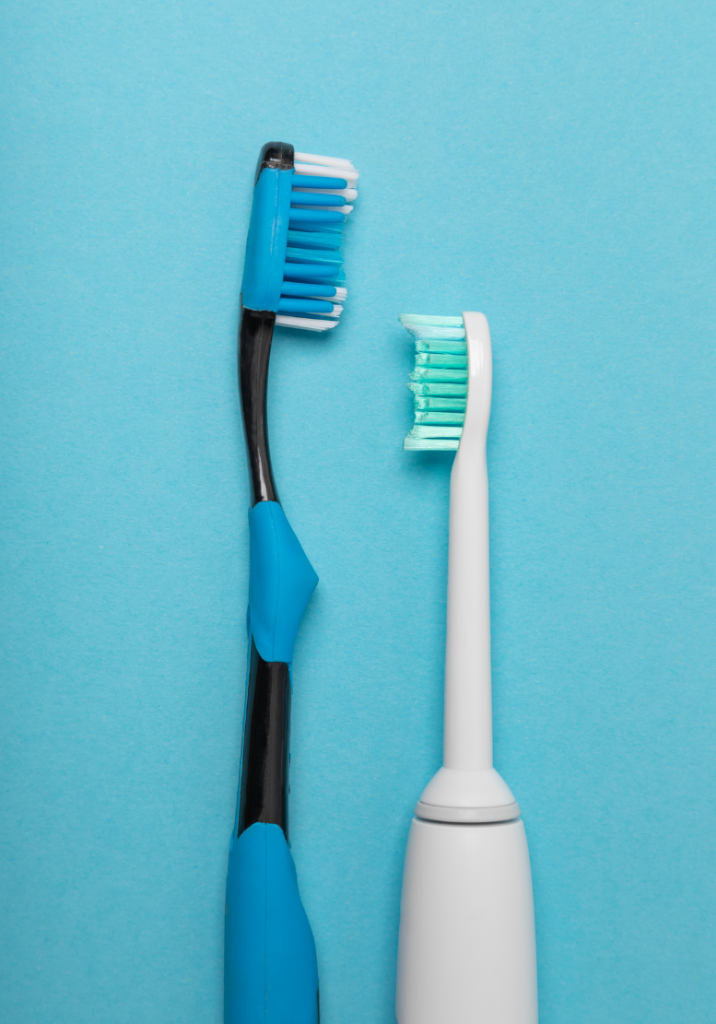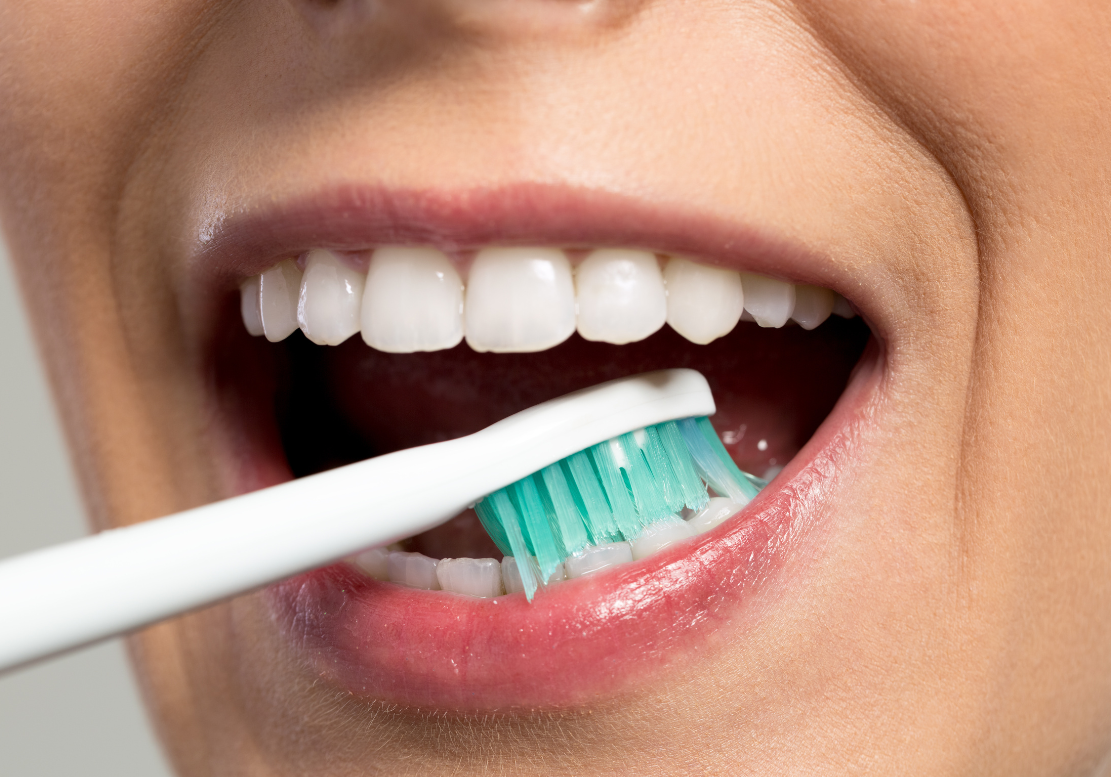Ask a Dentist:
Are electric toothbrushes better?
At our office, one of the most common questions we get is, “Are electric toothbrushes better?” This choice is more than just preference, it can affect your daily life as well as your long-term oral hygiene. In this article, we’ll give you the advice we our patients and finally settle the electric vs. regular toothbrush debate once and for all.

Electric vs. Regular Toothbrush
To begin with, let’s break down the different types of toothbrushes. Regular toothbrushes come in various shapes and sizes, with bristles that can be soft, medium, or hard. These brushes are entirely manual and require the user to provide all the motion and pressure. They might have bristles of different materials, length, and density. Electric toothbrushes are powered by batteries or rechargeable sources and come with rotating, vibrating, or oscillating brush heads. Some even have built-in timers to ensure you brush for the recommended two minutes.
How They Clean Your Teeth
Electric and regular toothbrushes clean teeth differently due to their design and functionality. Regular toothbrushes rely on the user’s ability to move the brush in a circular motion to clean all tooth surfaces effectively. The bristles need to be positioned at a 45-degree angle to the gums to remove plaque from the gum line and teeth. This requires a certain level of skill and attention to detail.
Electric toothbrushes, by contrast, often come with rotating, oscillating, or vibrating brush heads that can make thousands of movements per minute. This high-speed motion can remove plaque more efficiently in some cases and reach areas that might be missed with a manual brush. Many electric toothbrushes also have pressure sensors to alert users if they are brushing too hard, which can prevent damage to the gums and enamel.
Which Toothbrush Gives the Best Clean?

Both types of toothbrushes are effective at removing plaque and preventing gum disease if used correctly. Regular toothbrushes are affordable, easily accessible, and give users complete control over brushing pressure and motion. Electric toothbrushes, however, can make brushing easier and more efficient, especially for those with limited dexterity or strength.
Determining which toothbrush gives the best clean ultimately comes down to personal preference and technique. Studies have shown that electric toothbrushes can be more effective at reducing plaque and gingivitis in the short and long term compared to regular toothbrushes. However, this does not mean that a regular toothbrush is ineffective. A regular toothbrush can perform just as well if the correct brushing technique is used consistently.
The best clean is not necessarily about the type of toothbrush but how it is used. Using an electric toothbrush with improper technique can be less effective than using a regular toothbrush with the proper method. The main focus should be on the technique for optimal oral hygiene.
Let’s Talk Technique
We’ve established good technique is the key to a good clean. Now let’s go over the basics of brushing technique.
1. Position the Brush Correctly: Place your toothbrush at a 45-degree angle to your gums. This angle helps to reach the plaque at the gum line, which is essential for preventing gum disease.
2. Use Gentle, Circular Motions: Move the brush in gentle, circular motions rather than back-and-forth strokes. This technique is more effective at removing plaque and food particles from the surfaces of your teeth.
3. Brush All Surfaces: Ensure you brush all surfaces of your teeth – the outer surfaces, the inner surfaces, and the chewing surfaces. Spend about 30 seconds on each quadrant of your mouth.
4. Focus on the Gum Line: Don’t forget to brush along the gum line where plaque tends to accumulate. This area is often missed but is crucial for preventing gum disease.
5. Brush for Two Minutes: Brush your teeth for a full two minutes, twice a day. Many electric toothbrushes come with built-in timers to help you adhere to this guideline.
6. Don’t Forget Your Tongue: Use your toothbrush to gently brush your tongue as well. This helps to remove bacteria and freshen your breath.
7. Use the Right Pressure: Whether using an electric or a regular toothbrush, avoid applying too much pressure. Brushing too hard can damage your enamel and irritate your gums.
8. Replace Your Brush Regularly: Replace your toothbrush or brush head every three to four months or sooner if the bristles are frayed. Worn bristles are less effective at cleaning.
So the next time you wonder “Are electric toothbrushes better?”, remember that the most critical factor is not the type of toothbrush, but the technique you use to ensure a thorough and effective clean. By adopting the correct brushing method and sticking to a consistent oral hygiene routine, you can achieve and maintain a healthy, bright smile regardless of whether you use an electric or regular toothbrush.
